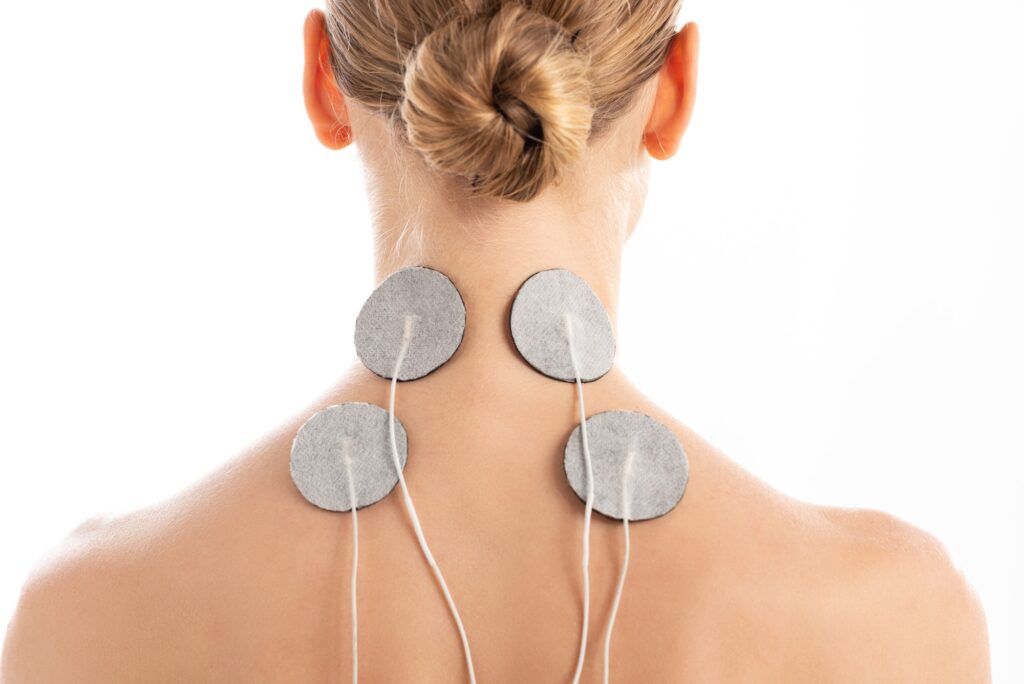Rehabilitation with Electro-Body Therapy is a progressive approach in the field of physical therapy and recovery. This method utilizes electrical stimulation to promote healing and muscle regeneration, offering a non-invasive alternative to traditional treatments. The therapy is designed to alleviate pain, improve circulation, enhance muscle tone, and promote overall physical wellness. This introduction provides an overview of the principles and applications of Electro-Body Therapy in rehabilitation, highlighting its benefits and effectiveness in treating various physical conditions and injuries.
Exploring the Role of Electro-Body Therapy in Rehabilitation and Recovery
Rehabilitation is a crucial part of recovery for many individuals, whether they’re bouncing back from an injury, surgery, or a chronic condition. In recent years, a novel approach to rehabilitation has been gaining traction, known as electro-body therapy. This innovative treatment method uses electrical stimulation to promote healing and recovery, offering a host of benefits to patients.
Electro-body therapy, also known as electrical muscle stimulation (EMS), works by sending mild electrical pulses through the skin to underlying nerve fibers. These pulses cause the muscles to contract and relax, similar to what happens during physical activity. This process can help to strengthen weak muscles, improve circulation, and promote overall healing.
One of the key advantages of electro-body therapy is its versatility. It can be used to treat a wide range of conditions, from sports injuries and post-surgical recovery to chronic conditions like arthritis and fibromyalgia. By targeting specific muscle groups, therapists can tailor the treatment to each patient’s individual needs, making it a highly personalized approach to rehabilitation.
Another significant benefit of electro-body therapy is its potential to speed up recovery times. The electrical stimulation can help to increase blood flow to the affected area, delivering essential nutrients and oxygen that aid in the healing process. This can result in faster recovery times, getting patients back on their feet more quickly than traditional rehabilitation methods alone.
Moreover, electro-body therapy can also play a crucial role in pain management. The electrical pulses can help to block pain signals from reaching the brain, providing temporary relief from discomfort. This can be particularly beneficial for patients dealing with chronic pain conditions, offering a non-invasive and drug-free alternative to pain medication.
Despite these benefits, it’s important to note that electro-body therapy is not a standalone treatment. It’s most effective when used in conjunction with other rehabilitation methods, such as physical therapy and exercise. This multi-faceted approach ensures that patients receive comprehensive care, addressing all aspects of their recovery.
While electro-body therapy is generally safe, it’s not suitable for everyone. Individuals with certain conditions, such as heart disease or epilepsy, may not be able to undergo this type of treatment. Additionally, it’s not recommended for pregnant women or individuals with implanted devices like pacemakers. As with any treatment, it’s crucial to discuss the potential risks and benefits with a healthcare provider before starting electro-body therapy.
In conclusion, electro-body therapy represents a promising advancement in the field of rehabilitation. By harnessing the power of electrical stimulation, it offers a versatile and effective approach to recovery, with the potential to speed up healing times, manage pain, and improve overall quality of life. As research continues to explore the full potential of this treatment, it’s likely that we’ll see electro-body therapy playing an increasingly prominent role in rehabilitation and recovery. So, for those on the journey to recovery, this innovative therapy could be a game-changer, offering a new avenue to regain strength, mobility, and independence.
Injury Treatment: The Impact of Electro-Body Therapy in Rehabilitation
Rehabilitation is a crucial part of recovery for individuals who have suffered injuries, undergone surgeries, or are dealing with chronic pain. It is a process that requires patience, dedication, and the right treatment methods to ensure optimal recovery. One such innovative treatment method that has been gaining recognition in the field of rehabilitation is Electro-Body Therapy. This therapy uses electrical stimulation to promote healing and improve physical function, offering a promising approach to injury treatment.
Electro-Body Therapy, also known as Electrical Muscle Stimulation (EMS), is a form of treatment that uses low-level electrical currents to stimulate muscle contraction. This stimulation mimics the natural way the body makes muscles move, which can be incredibly beneficial for those who are unable to exercise or move certain parts of their body due to injury or illness. The electrical impulses are delivered through electrodes placed on the skin, targeting specific muscle groups or areas of the body.
The beauty of Electro-Body Therapy lies in its versatility. It can be used to treat a wide range of conditions, from sports injuries and post-operative recovery to chronic conditions like arthritis and fibromyalgia. The therapy works by promoting blood flow to the affected area, reducing inflammation, and accelerating the healing process. It also helps to strengthen muscles and improve flexibility, which can prevent future injuries.
One of the key benefits of Electro-Body Therapy is its ability to provide pain relief. The electrical stimulation interrupts the pain signals sent to the brain, effectively reducing the perception of pain. This can be a game-changer for individuals dealing with chronic pain conditions, providing them with a non-invasive and drug-free alternative for pain management.
Moreover, Electro-Body Therapy can also play a significant role in improving mobility. For individuals recovering from surgeries or injuries, regaining movement can be a slow and challenging process. Electro-Body Therapy can speed up this process by re-educating the muscles and improving muscle tone. This can help individuals regain their independence and return to their daily activities more quickly.
While the benefits of Electro-Body Therapy are impressive, it’s important to remember that it’s not a standalone treatment. It should be used as part of a comprehensive rehabilitation program that includes other forms of therapy such as physiotherapy, occupational therapy, and exercise. It’s also crucial to work with a trained professional who can properly administer the treatment and monitor progress.
In conclusion, Electro-Body Therapy offers a promising approach to rehabilitation. Its ability to promote healing, provide pain relief, and improve mobility can significantly enhance the recovery process. However, as with any treatment, it’s important to have realistic expectations and understand that recovery takes time. With patience, dedication, and the right treatment methods, individuals can make significant strides in their rehabilitation journey. So, if you or a loved one are in the process of rehabilitation, consider exploring the potential benefits of Electro-Body Therapy. It could be the game-changer you’ve been looking for.
Physical Therapy Advancements: The Integration of Electro-Body Therapy in Rehabilitation
Rehabilitation is a crucial part of recovery for many patients, whether they’re bouncing back from an injury, surgery, or a chronic illness. Over the years, the field of physical therapy has seen numerous advancements, with new techniques and technologies continually emerging to aid in the recovery process. One such innovation that has been gaining traction is Electro-Body Therapy, a cutting-edge treatment that uses electrical stimulation to promote healing and improve physical function.
Electro-Body Therapy, also known as Electrical Muscle Stimulation (EMS), is a therapeutic treatment that applies electrical currents to specific areas of the body. These currents stimulate muscle contractions, which can help to strengthen weakened muscles, improve circulation, and promote healing. This therapy has been found to be particularly beneficial for patients who are unable to perform traditional exercises due to pain or physical limitations.
The integration of Electro-Body Therapy into rehabilitation programs has been a game-changer for many patients. The therapy is non-invasive and can be tailored to the specific needs of each individual, making it a versatile tool in the physical therapist’s arsenal. Moreover, it can be used in conjunction with other treatments, such as manual therapy and exercise, to provide a comprehensive approach to rehabilitation.
One of the key benefits of Electro-Body Therapy is its ability to target specific muscle groups. This precision allows therapists to focus on the areas that need the most attention, which can lead to more effective treatment and faster recovery times. Additionally, the therapy can help to reduce pain and inflammation, which can make the rehabilitation process more comfortable for patients.
Another advantage of Electro-Body Therapy is its potential to improve muscle tone and strength. By stimulating muscle contractions, the therapy can help to build muscle mass and improve overall physical function. This can be particularly beneficial for patients who have experienced muscle atrophy due to injury or illness.
Despite its many benefits, it’s important to note that Electro-Body Therapy is not a standalone solution. It’s most effective when used as part of a comprehensive rehabilitation program that includes other forms of therapy and exercise. Furthermore, while the therapy is generally safe, it’s not suitable for everyone. Patients with certain conditions, such as heart disease or epilepsy, may not be able to undergo Electro-Body Therapy.
In conclusion, Electro-Body Therapy represents a significant advancement in the field of physical therapy. Its ability to target specific muscle groups, reduce pain, and improve physical function makes it a valuable tool in the rehabilitation process. However, like all therapies, it’s not a one-size-fits-all solution. It’s important for patients to work closely with their physical therapists to develop a personalized treatment plan that meets their unique needs and goals. With the right approach, Electro-Body Therapy can play a key role in helping patients regain their strength and mobility, and ultimately, improve their quality of life.Electro-Body Therapy has shown significant potential in rehabilitation processes. It can aid in pain management, muscle stimulation, and overall recovery. However, more research is needed to fully understand its long-term effects and potential risks. It is a promising tool but should be used under professional supervision.








